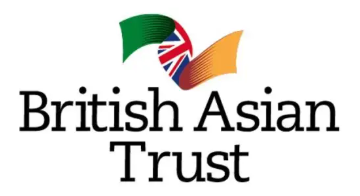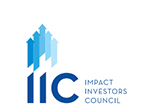|
Capital Provider Showcase
Dialogue with Anushree Parekh, Associate Director - Social Finance, British Asian Trust
|
|

1 The British Asian Trust has been a pioneer in deploying Outcomes-Based Finance (OBF) and specifically, Development Impact Bonds (DIBs), in India’s impact sector. Looking back, what elements of the DIB model were most instrumental in aligning incentives across diverse stakeholders - governments, donors, implementation partners and investors?
|
Over the last seven years, the British Asian Trust has pioneered outcomes-based financing (OBF) in India, launching 3 out of the 5 Development Impact Bonds (DIBs) the country has seen, mobilising around $40 million, convening 40+ partners across philanthropists, investors, nonprofits, social enterprises, and governments, and benefiting 4.25 million people. Our experience with OBF, particularly with DIBs, has shown that the model’s most instrumental strength lies in its razor-sharp focus on clearly defined and measurable outcomes.
A development impact bond, by definition, builds alignment and accountability among all partners towards end outcomes, and makes measurement of these outcomes the central fulcrum for all decisions, including payments. This singular focus naturally creates alignment among diverse stakeholders – investors, implementation partners, outcomes funders, and others.
By linking payments to the achievement of outcomes, the model creates a shared sense of accountability and motivation. Investors are incentivised to support effective implementation, implementation providers are empowered to innovate, adapt, and do what it takes to achieve outcomes in a manner they see fit, and outcome funders – whether donors or governments – only pay for results, enhancing value for money.
When it comes to setting mutually agreed-upon outcomes, a collaborative process is followed, ensuring alignment is built right from the outset. Outcome targets are usually ambitious yet realistic and are underpinned by pre-defined definitions of success, verification parameters, and evaluation methodologies. This level of clarity ensures that there is no ambiguity and that nothing is left open to interpretation midway through or at the end of the programme, leaving all parties working toward the same, clearly defined, well understood goals.
Together, these elements create a performance-driven culture that transcends traditional silos and promotes genuine collaboration – one of the most powerful contributions of the DIB model to India’s impact finance ecosystem.
As a transaction manager and programme leader for the DIBs that the British Asian Trust has launched – Quality Education India DIB, Skill Impact Bond, and LiftEd – we facilitate regular, open, and continuous communication for all parties to ensure that outcomes remain our north star. As a part of our role in managing governance, we build in systematic and structured cadences to ensure regular sharing of progress, developments and learnings, discussion and resolution of challenges and risks, and alignment of external communications. Complementing formal structures, agreements, and roles, is the continued relationship-building efforts we facilitate that create trust and confidence, while balancing the needs and priorities of each partner.
|
2
Philanthropy can play a catalytic, risk-decreasing role for innovations in education. What frameworks or criteria guide your identification of white spaces for philanthropic intervention? How do you balance responsiveness to emerging needs with long-term systems thinking in programme design?
|
At the British Asian Trust, we’ve come to see that truly catalytic philanthropy in education requires a shift in how we define our role – not as intermediaries, but as system enablers. As we began to confront some of the deepest, most persistent barriers in the philanthropic landscape, such as fragmented collaboration and inefficient funding flows, we recognised that traditional approaches weren’t enough. We needed to think more expansively and reimagine how we contribute to impact.
When identifying white spaces for philanthropic intervention, our guiding framework is catalytic impact. When opportunities present themselves, we ask: Will this funding unlock more capital? Will it bring new stakeholders to the table? Will it build something foundational that others can’t or won’t fund? If the answer is yes, then it’s likely worth pursuing. This lens ensures that our work isn’t just about funding a programme or some activities, but about creating momentum – more strategic use of capital, more ownership, and more “skin in the game” across the ecosystem.
We have also now begun to embed systems thinking into our designs. While we remain responsive to emerging needs – especially in a fast-evolving education landscape – we are now considering how we can create long-term change. Early DIBs operated on the premise that demonstrating “what works” would lead to direct government uptake of high-impact interventions. However, we learnt with the Quality Education India (QEI) DIB that it isn’t as simple as that. So, when we decided to take our learnings from the QEI DIB and scale them further with LiftEd, we designed the initiative to take on a systems strengthening approach, working in close alignment with the Government of India’s NIPUN Bharat Mission to improve foundational literacy and numeracy (FLN) for millions of children across India.
Ultimately, we believe that creativity and risk-taking are not just traits of a bold organisation but are essential tools for transforming lives at scale. The entrepreneurial spirit of the South Asian diaspora is a core part of our DNA, as is a deep willingness to challenge the status quo and never shy away from out-of-the-box thinking.
|
3
As EdTech adoption grows, digital divide concerns deepen, especially among rural, tribal and marginalised communities. How is BAT ensuring that the adoption of technology in education enhances equity rather than exacerbating inequality? What frameworks or partnerships have been successful in ensuring last-mile impact?
|
Equity is an important lens through which we approach EdTech. By designing for context, measuring equity, and building inclusive partnerships, we aim to ensure EdTech truly expands opportunity for all learners, not just the privileged few.
For example, we have supported early-stage digital learning innovations designed specifically for low-income communities through our EdTech Accelerator, part of the LiftEd initiative in partnership with Central Square Foundation. These solutions are often offline, in local languages, and built to work in low-data environments, ensuring accessibility for low-income segments.
We prioritise pedagogically sound, contextually relevant tools and track disaggregated data, especially by gender, to ensure no group is left behind. Many of the solutions supported through the LiftEd EdTech Accelerator combine EdTech with a community-based approach, helping reach students who may otherwise be excluded. We also explore alternative pathways, such as retail channels through self-help groups and partnerships with state governments to institutionalise remote learning.
Importantly, we also recognise the critical role of child privacy and digital safety in responsible EdTech. As part of our approach, we have convened workshops with EdTech partners to embed safeguarding principles into their design and delivery.
|
4
BAT has championed rigorous outcome tracking in its education programmes. What innovations in data collection, adaptive learning systems or feedback loops have proven most effective in driving real-time course correction and accountability in education interventions? What structural or policy-level changes do you believe are needed to mainstream outcomes-based approaches across sectors?
|
Our work across three major DIBs in India has shown us that fit-for-purpose measurement systems are essential to achieving results. In these programmes, the centrality of real-time data, quality verification, and adaptive evaluation frameworks has been key to enabling timely course correction and enhancing accountability.
For example, in the LiftEd DIB, one of our education partners progressed from having limited on-ground visibility to leveraging timely data nudges for teachers, resulting in a 30% increase in adoption of formative assessments. In the Skill Impact Bond, data was used not only for outcome verification but also to strengthen internal performance management systems: one of our partners even created a dedicated team to monitor and prevent data misreporting. These insights fed directly into implementation changes, such as refining placement models and customising job support for candidates.
A key learning that we have had is that evidence must be actionable and the use of data should be incentivised for improving performance in real time, not just for reporting. This creates a culture of continuous learning and adaptation. However, scaling such adaptive, outcome-focused systems more broadly requires structural and policy-level shifts.
- Institutional capacity-building not just to support outcomes-based contracting and payment systems, but also to equip government stakeholders with the skills to procure on outcomes, a capability currently underdeveloped in many public systems.
- Greater trust and investment in administrative data systems, which are often nascent and not consistently reliable, to reduce the high cost and complexity of third-party verification.
- A “do and learn” approach that allows for adaptive implementation and iterative refinement recognising that in contexts like India, imperfect data and evolving benchmarks are the norm, not the exception.
As a sector, we must shift from pursuing “perfect data” to building robust, real-time feedback systems that support continuous learning, adaptation, and ultimately, better outcomes.
|
5
As BAT continues to evolve its impact strategy in India, what bold bets or emerging frontiers is BAT making over the next few years, whether in terms of new sectors, geographies, or financing models? How do these directions reflect the future of inclusive and catalytic philanthropy?
|
As the British Asian Trust continues to evolve its impact strategy in India, we’re focused on challenging the status quo and push the boundaries of what’s possible in philanthropy. Whether it’s with child opportunity or conservation, we’re committed to going where few others have gone and to applying the same outcomes-focused rigour that has defined our work in education and skilling.
Within the realm of OBF, we’re now exploring how the approach and principles can be used to advance entrepreneurship, particularly for nano-entrepreneurs from underserved demographics. We think this is a space that’s ripe for innovation but often lacks performance-linked capital.
Our role is also evolving – from a pioneer of OBF in India, to a champion, to a catalyst. Having demonstrated that OBF is a viable, effective approach to development, our mission is to now act as a catalyst that enables wider adoption of OBF across a broader set of stakeholders, including government systems. We are not just implementing OBF; we’re championing it, and we’re focused on embedding its principles within public and philanthropic systems across the country.
Our ambition is not to scale programmes, but to transform the way development is financed and delivered, building a future where every rupee – whether philanthropic, commercial, or public – works harder and smarter to build a Viksit Bharat.
|
6
As we look ahead, how should future DIBs evolve in terms of structure, scale, or sectoral focus to unlock their full potential as tools for systems transformation?
|
At the British Asian Trust, we firmly believe that DIBs are not a silver bullet that can be applied to all development challenges. Rather than the tool, we think that the principles that drive it are far more important – rigorous monitoring and evaluation, data-driven decision-making, innovation and flexibility, constant iteration/improvement and ensuring that we drive and share learning for our sectors and beyond.
This shift in mindset is key to unlocking OBF’s full potential as an approach for transformation. Its real strength lies not in the mechanics of the tool itself, but in its ability to instil a culture of accountability and performance across entire ecosystems.
Apart from deconstructing the development impact bond, we have learnt a number of valuable lessons from our seven years of experience with DIBs in India. These include designing to integrate with the system and building for government adoption from the get-go; designing for imperfect realities, particularly when it comes to data and benchmarking; rethinking ‘gold standard’ evaluations and creating fit-for-purpose verification approaches; and using global philanthropy and aid creatively and catalytically.
The DIBs completed in India have demonstrated strong results, and those currently underway show promising potential. While this has served India’s development needs at the time well, as the country gears up towards the next generation of OBF, based on feedback from the market, we are learning that it is perhaps more desirable to identify the principles that led to better outcomes, and apply these core principles within simpler, more adaptable frameworks.
|
|
|
Anushree Parekh, Associate Director - Social Finance, British Asian Trust
Anushree Parekh leads the British Asian Trust's social finance work in India. She is a social impact consultant with more than 15 years of experience in corporate social responsibility, public policy, and nonprofit sectors in India and the UK. Before joining BAT, Anushree led impact advisory at Waterfield Advisors and set up the research and strategy practice at Samhita Social Ventures. She has an MSc in Development Studies from SOAS, University of London and a BA in Economics from St. Xavier's College, Mumbai.
About British Asian Trust
Founded in 2007 by His Majesty King Charles III and a group of British Asian business leaders, the British Asian Trust is a diaspora-led development organisation that aims to unlock the potential of disadvantaged people across South Asia. Since being founded, it has positively impacted over 13 million lives, tackling challenges and inequalities in the areas of education, livelihoods, mental health, child protection, and conservation. The Trust is also a pioneer of social finance in South Asia, specialising in outcomes-based finance.
|
|
About Impact Investors Council:
Impact Investors Council, India (IIC) is a member-based national industry body formed with an
objective to build and strengthen the impact investing eco-system in India. To know more about our work visit https://iiic.in or reach out to secretariat@iiic.in
|
Disclaimer: Data and Information in this newsletter is made available in good faith with the exclusive intention of helping market and ecosystem players, policymakers and the public build a greater
understanding of the Indian impact investing market. The data is collated from sources believed to be reliable and accurate at the time of publication. Readers are urged to exercise independent judgment and diligence in the
usage of this information for any investment decisions
Some of the information provided in this newsletter is supplied by third parties. It is important that all users understand that third party information is not an endorsement of any nature and has been put together with the
sole purpose of benefiting stakeholders.
|
| Unsubscribe |
|
|
|


